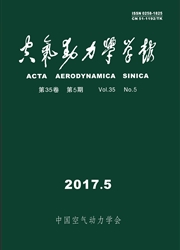

 中文摘要:
中文摘要:
湍流模型是目前解决工程中湍流问题不可缺少的工具。然而它终究是建立在简化与假设的基础上的,其准确性必须经过实际的检验。对超声速边界层,由于缺乏系统的实验数据,检验工作很难做。本文以BL模型为例,通过可压缩湍流边界层的三个典型算例,与直接数值模拟(DNS)的结果作对比。分析了其成功及不足之处,以及影响其精度的若干因素,并检验了用BL模型预测转捩位置的有效性。
 英文摘要:
英文摘要:
At the present moment, turbulent modeling is a necessary tool in solving engineering turbulent problems. However, it is based on certain simplified assumptions, the accuracy of the results must be verified. For supersonic boundary layers, the examination may be difficult, because of the lack of systematic experimental data. In this article, BL model is used to study three typical cases of compressible turbulent boundary layer, for which, data from direct numerical simulation (DNS) are available for comparison. Its advantages and shortcomings, as well as factors influencing its accuracy are analyzed, and the proposed method of predicting the transition location has also been tested.
 同期刊论文项目
同期刊论文项目
 同项目期刊论文
同项目期刊论文
 The effect of high temperature induced variation of specific heat on the hypersonic turbulent bounda
The effect of high temperature induced variation of specific heat on the hypersonic turbulent bounda Numerical Investigation on Inviscid Instability of Streaky Structures in Incompressible Boundary Lay
Numerical Investigation on Inviscid Instability of Streaky Structures in Incompressible Boundary Lay 期刊信息
期刊信息
